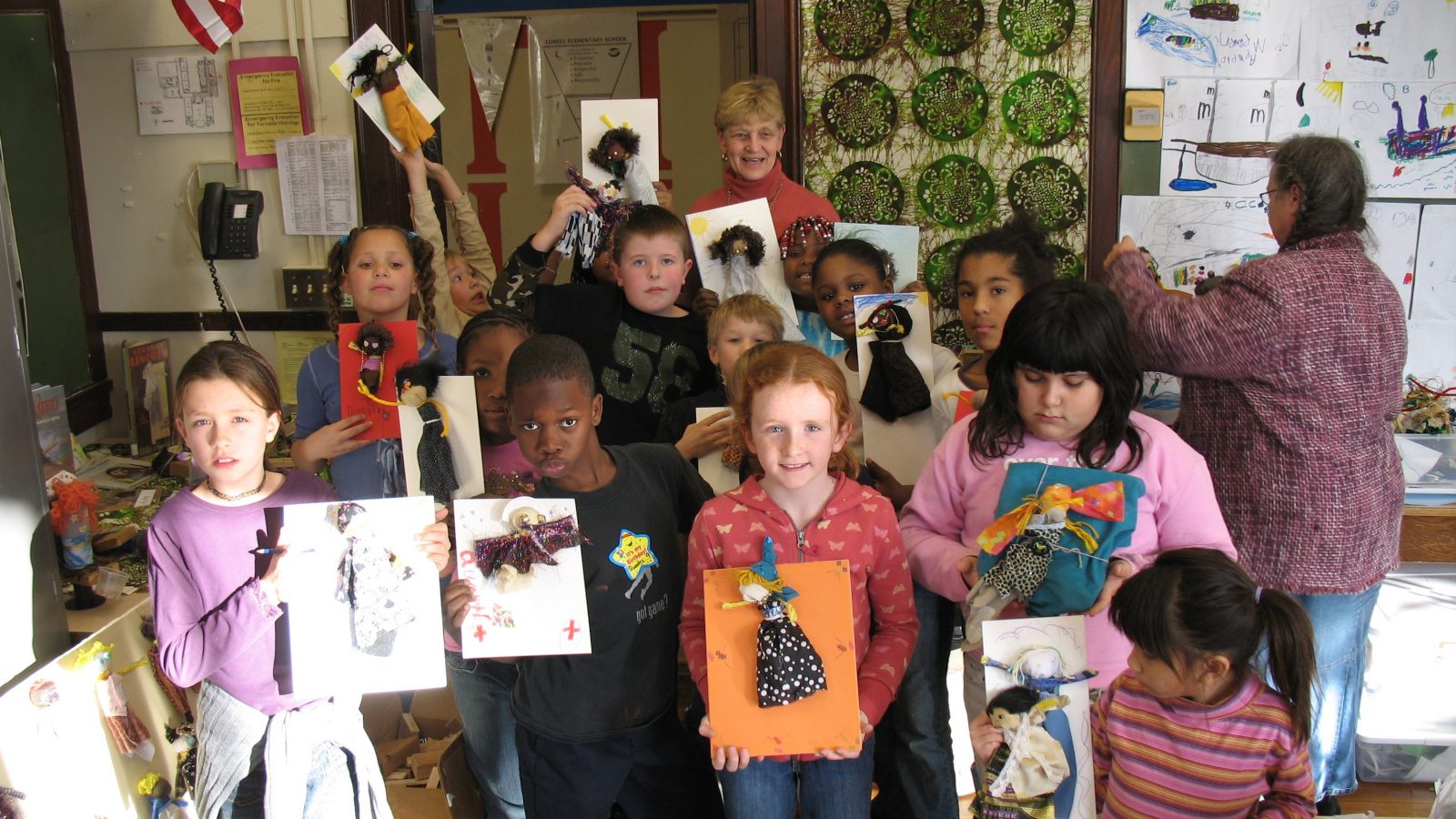Fabric Figures can be made with classroom students as young as kindergarten age, neighborhood center participants, in therapy sessions, as inter-generational activities, at birthday parties, or with other groups. Classroom teachers can organize their own Fabric Figure activity or have an artist-in-residence lead their class or school in a Fabric Figure making project. Boys participate equally in making Fabric Figures, and can benefit from the opportunity to create human representations – an activity often reserved for girls only.
If you are making Fabric Figures with more than 2 or 3 children at a time, you might want to pre-make basic figures. (See How to Make a Fabric Figure handout) Be sure to use a variety of skin tone fabrics to represent the diversity of people in the world. You can also pre-make skirts and pants on a sewing machine– this step will greatly simplify your project, especially for very young children.
Children can be taught basic sewing skills through the construction of Fabric Figures, or you can enlist the help of volunteers to hot glue Fabric Figures for children. In a classroom setting, a selection of pre-made basic figures can be placed at the tables. Stations can be set up around the room for hot gluing, and for selecting skirts, pants, strips of fabric for tops, small pieces of fabric for hats, capes and other clothing items, yarn for hair, trim, beads for eyes, etc. Try to keep everything orderly! Children will have plenty of opportunity to exercise individual creativity in their choices of fabric and ways they choose to embellish and finish their Fabric Figure.
Once they are completed, Fabric Figures can be displayed in a variety of ways. I like to mount them on matte board, using 2 pins to secure them. This way, the pins can be removed later, if so desired. At some schools, volunteers have sewn sleeping bags or cut thicker fabric for blankets. Children can also use plastic containers or baskets as beds, make houses out of cardboard, or decorate / embellish their matte board. Classroom teachers can use Fabric Figures for storytelling, plays, and other literacy work. Fabric Figures can be used to tell family and neighborhood histories.
Making Fabric Figures with a child can be a very effective activity for therapists. Therapists can use making Fabric Figures as an activity when first getting to know a child, when they are trying to make an important breakthrough with a child, or as a parting activity when therapy is drawing to a close.
Making Fabric Figures can be a fun activity at birthday parties or other gatherings, especially at which various generations are together. You never know which child’s grandfather once worked as a milliner, making hats!
